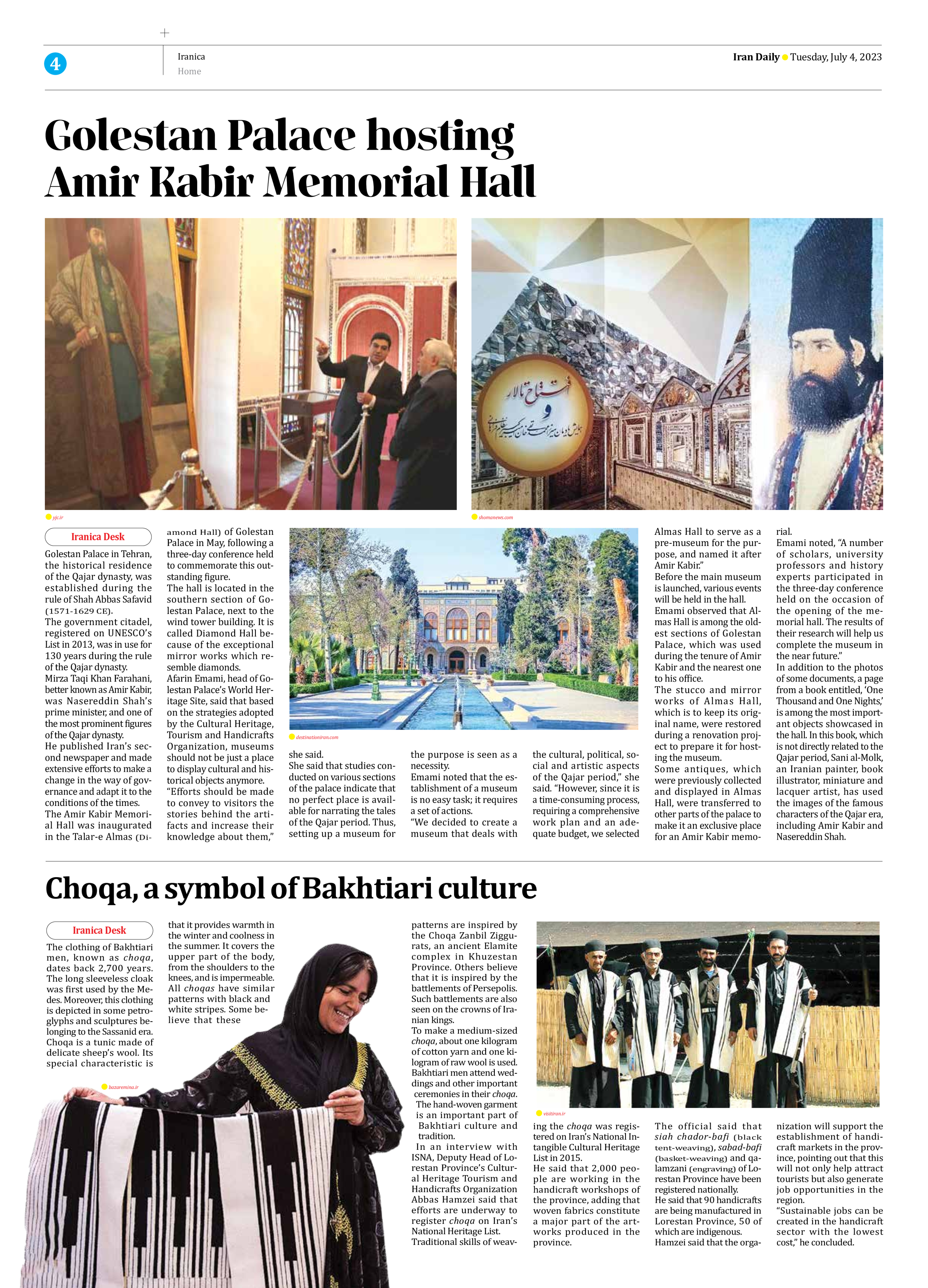
Choqa, a symbol of Bakhtiari culture
The clothing of Bakhtiari men, known as choqa, dates back 2,700 years. The long sleeveless cloak was first used by the Medes. Moreover, this clothing is depicted in some petroglyphs and sculptures belonging to the Sassanid era.
Choqa is a tunic made of delicate sheep’s wool. Its special characteristic is that it provides warmth in the winter and coolness in the summer. It covers the upper part of the body, from the shoulders to the knees, and is impermeable.
All choqas have similar patterns with black and white stripes. Some believe that these patterns are inspired by the Choqa Zanbil Ziggurats, an ancient Elamite complex in Khuzestan Province. Others believe that it is inspired by the battlements of Persepolis. Such battlements are also seen on the crowns of Iranian kings.
To make a medium-sized choqa, about one kilogram of cotton yarn and one kilogram of raw wool is used.
Bakhtiari men attend weddings and other important ceremonies in their choqa. The hand-woven garment is an important part of Bakhtiari culture and tradition.
In an interview with ISNA, Deputy Head of Lorestan Province’s Cultural Heritage Tourism and Handicrafts Organization Abbas Hamzei said that efforts are underway to register choqa on Iran’s National Heritage List.
Traditional skills of weaving the choqa was registered on Iran’s National Intangible Cultural Heritage List in 2015.
He said that 2,000 people are working in the handicraft workshops of the province, adding that woven fabrics constitute a major part of the artworks produced in the province.
The official said that siah chador-bafi (black tent-weaving), sabad-bafi (basket-weaving) and qalamzani (engraving) of Lorestan Province have been registered nationally.
He said that 90 handicrafts are being manufactured in Lorestan Province, 50 of which are indigenous.
Hamzei said that the organization will support the establishment of handicraft markets in the province, pointing out that this will not only help attract tourists but also generate job opportunities in the region.
“Sustainable jobs can be created in the handicraft sector with the lowest cost,” he concluded.







